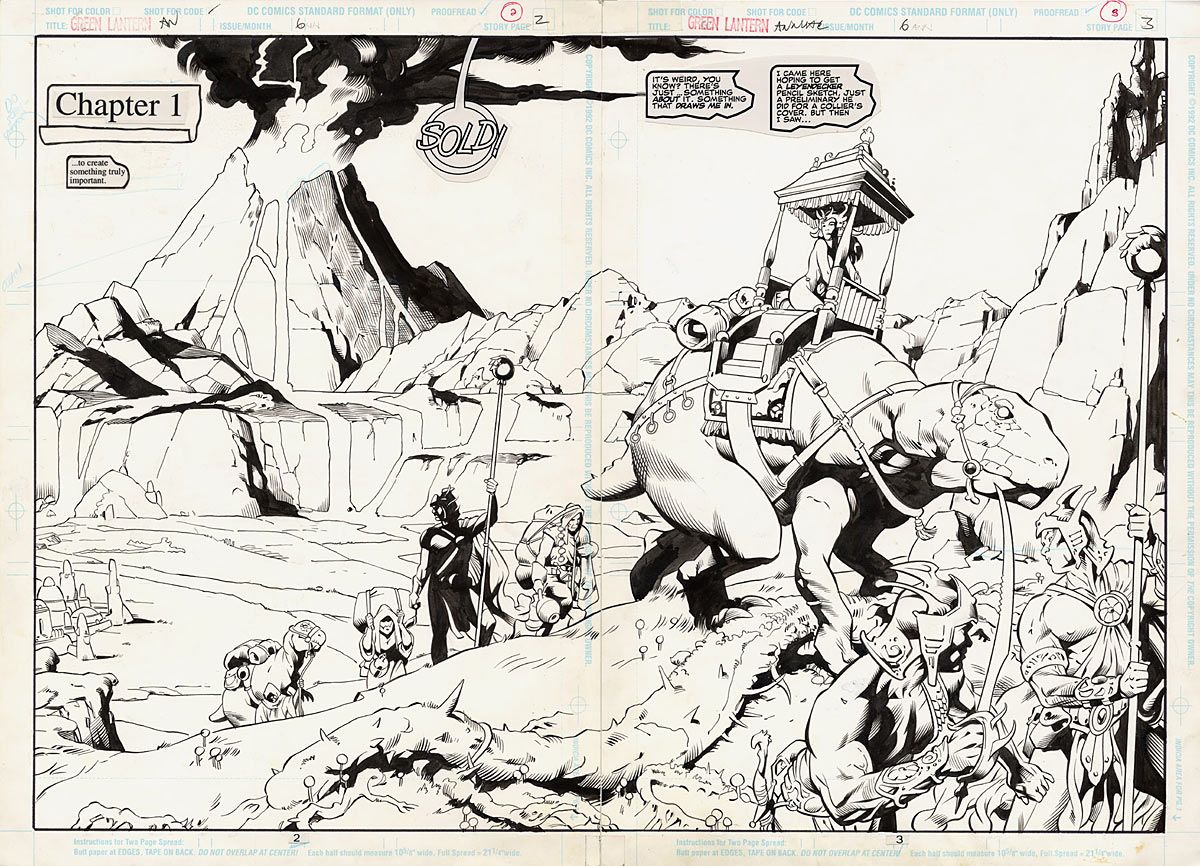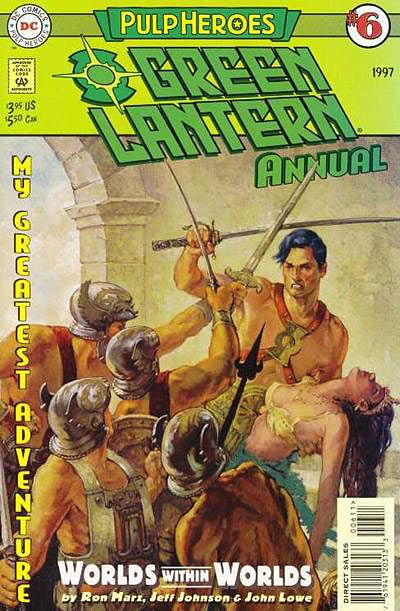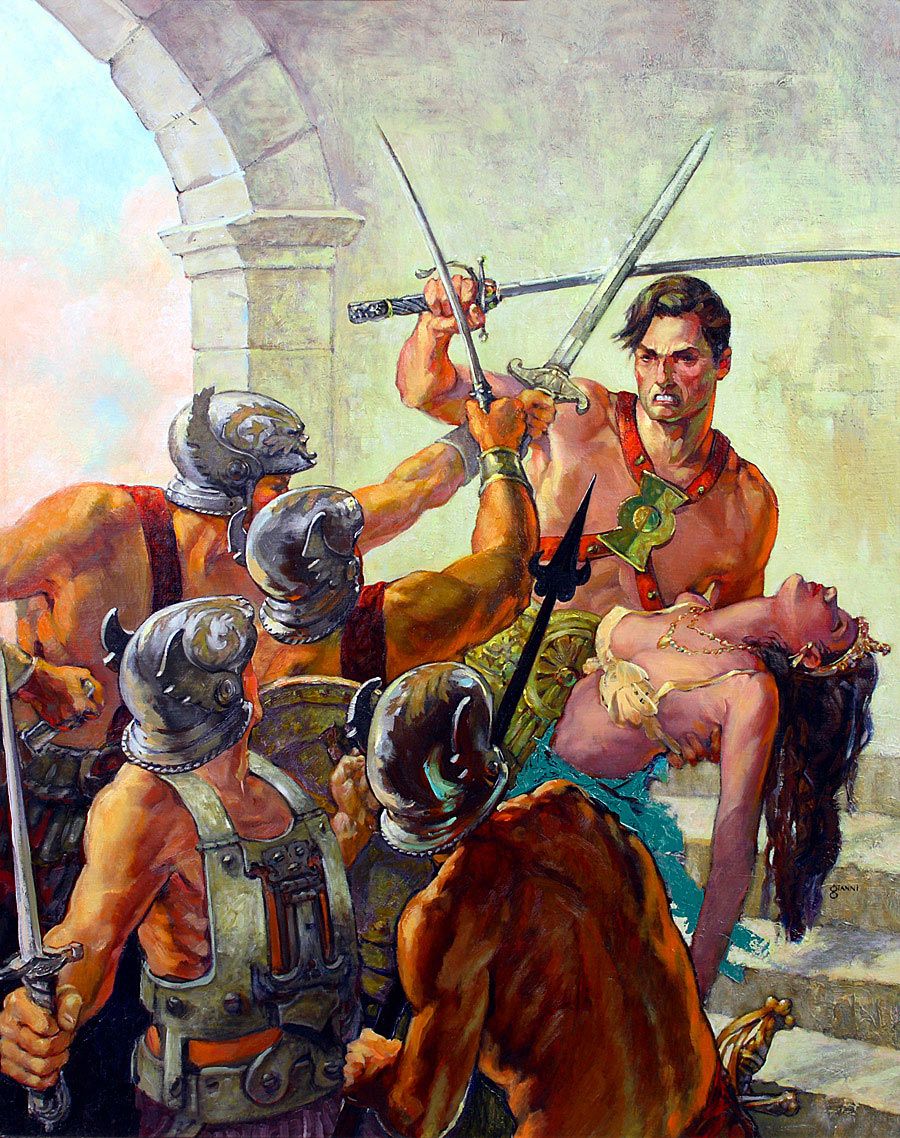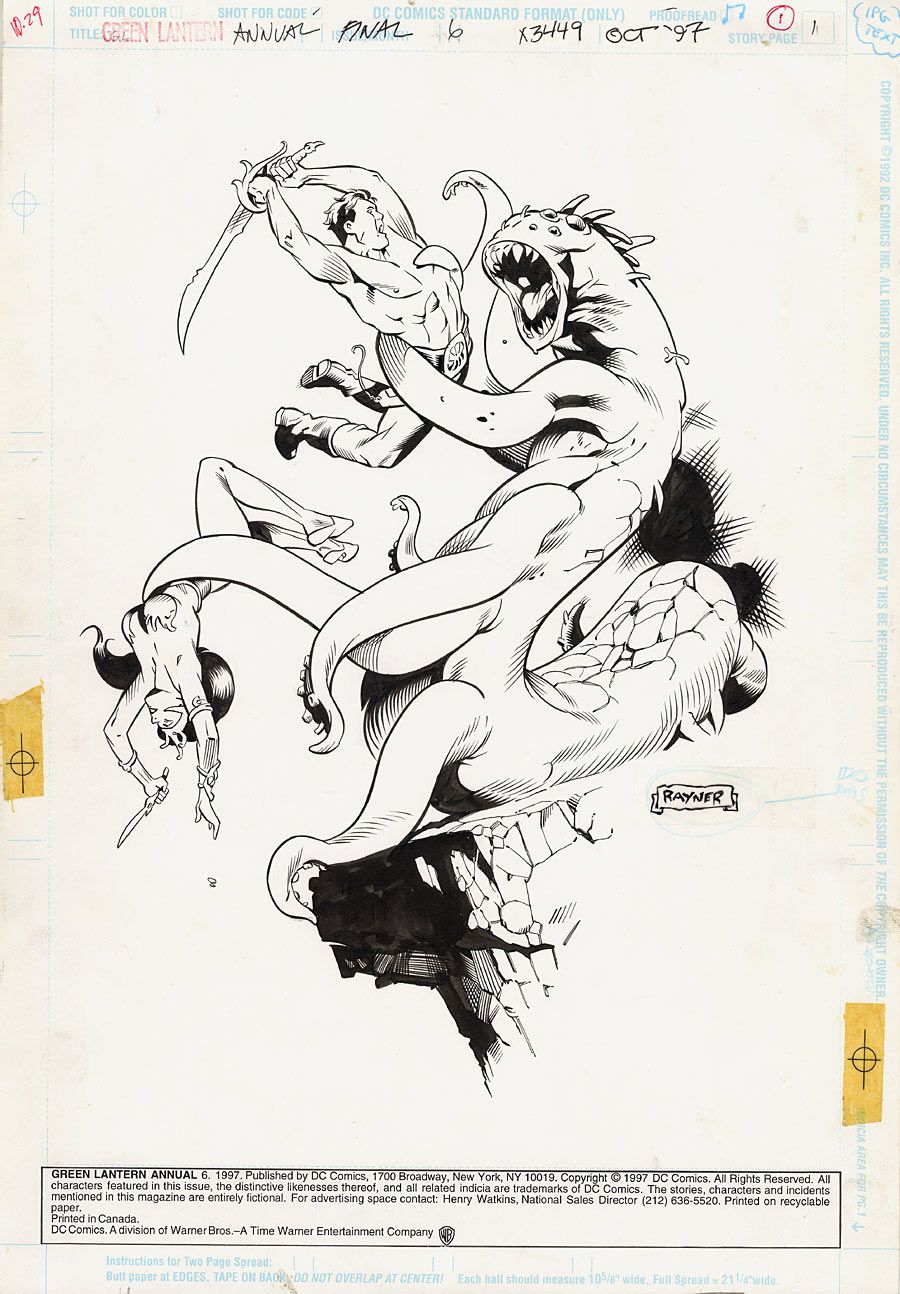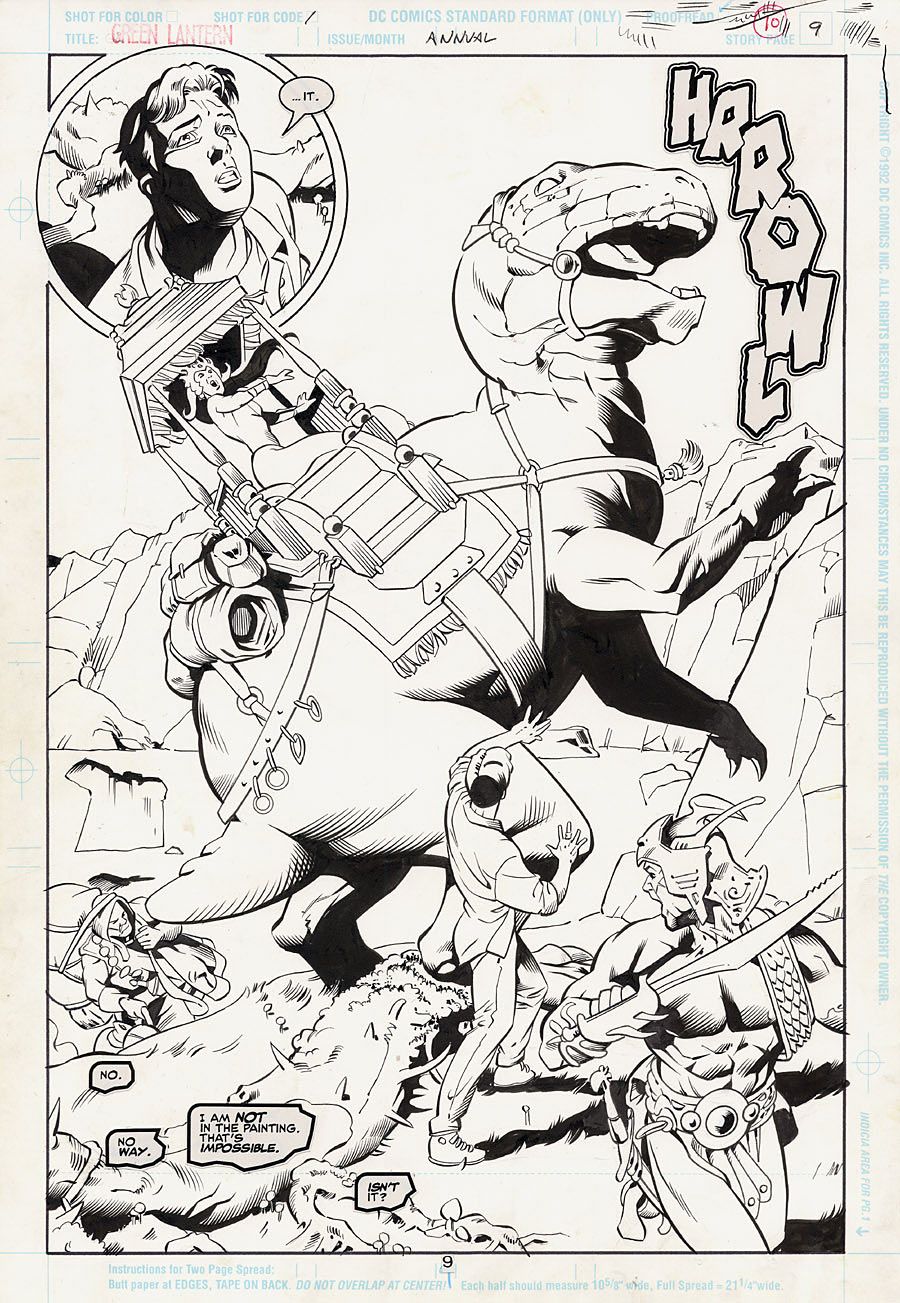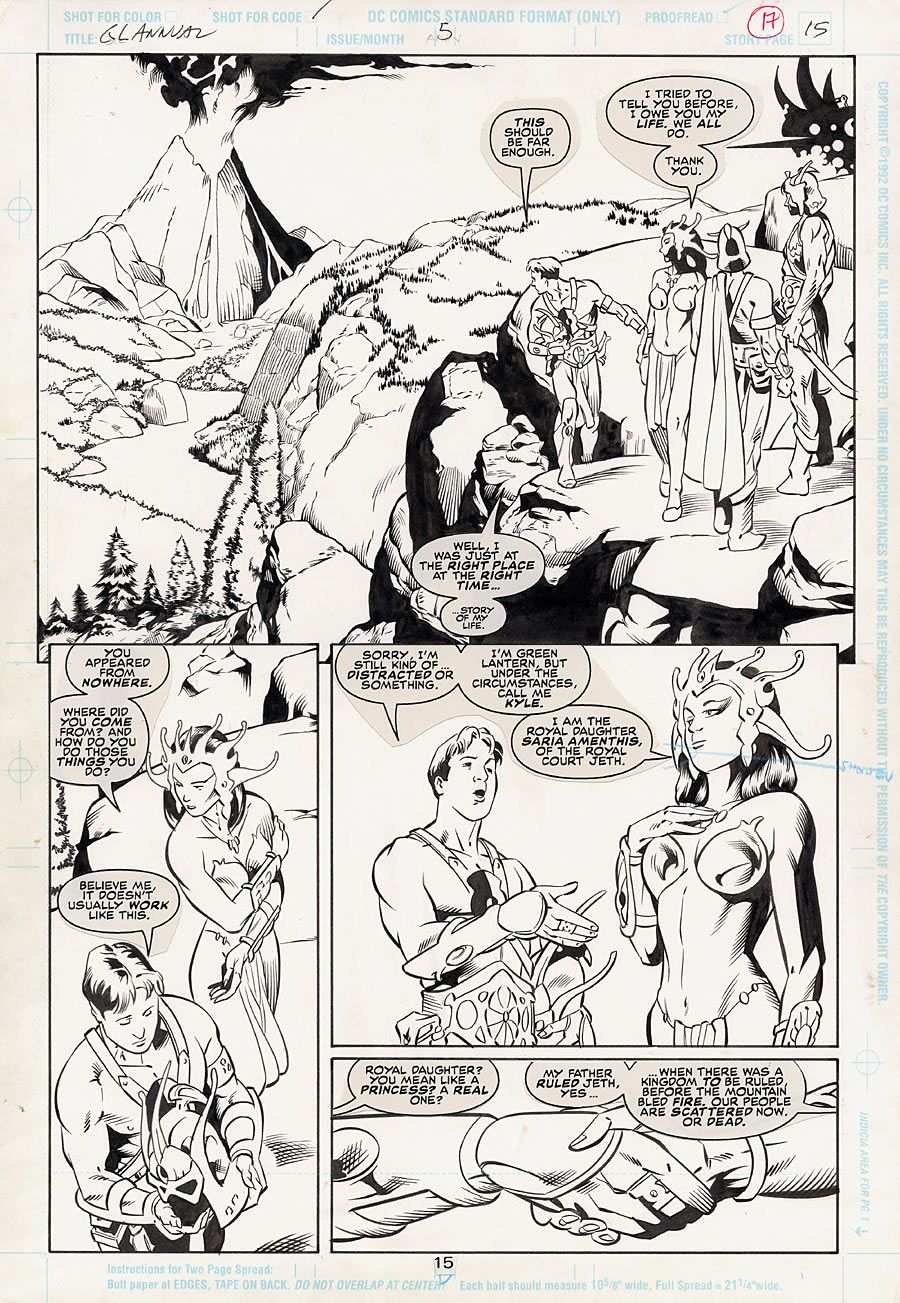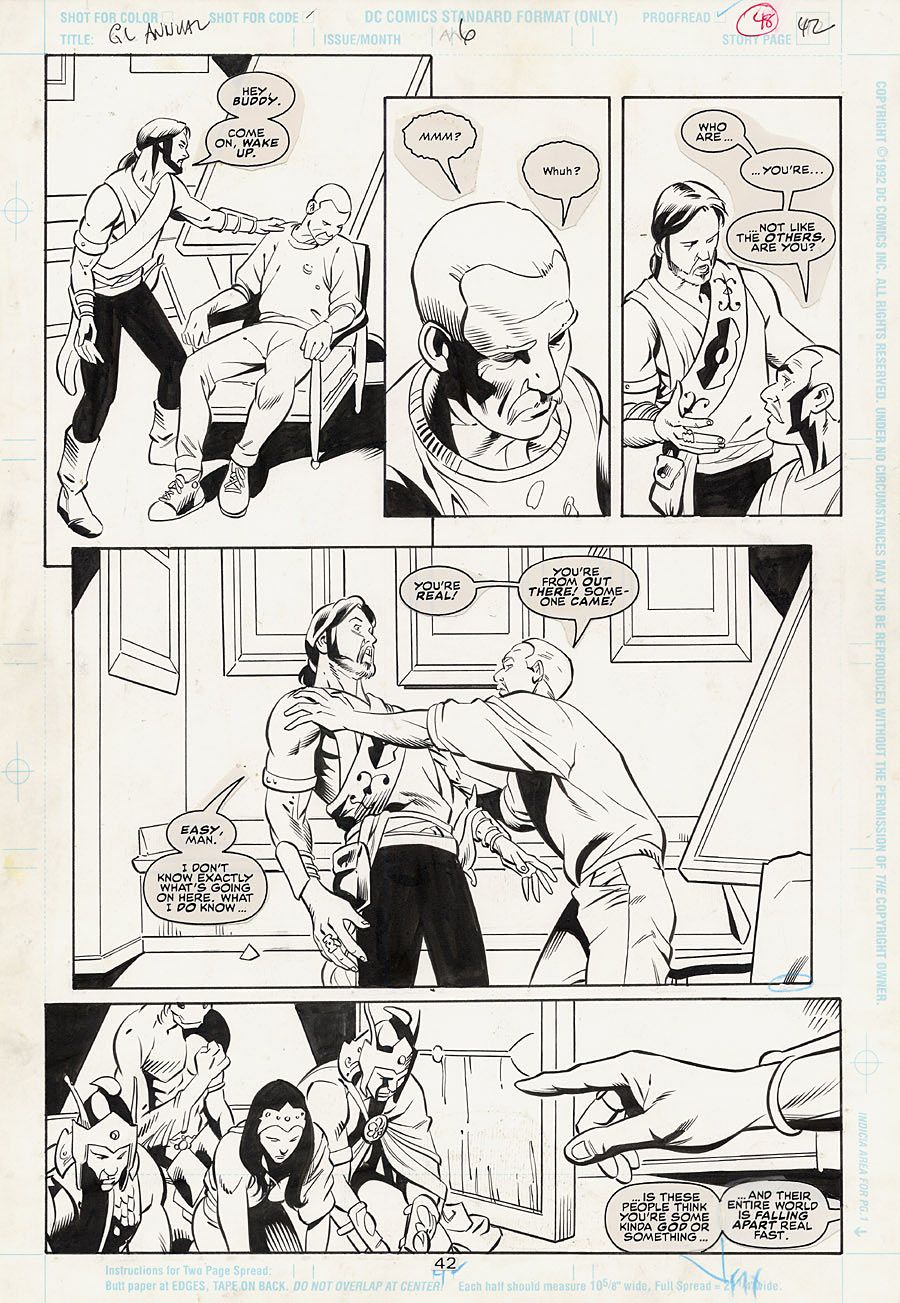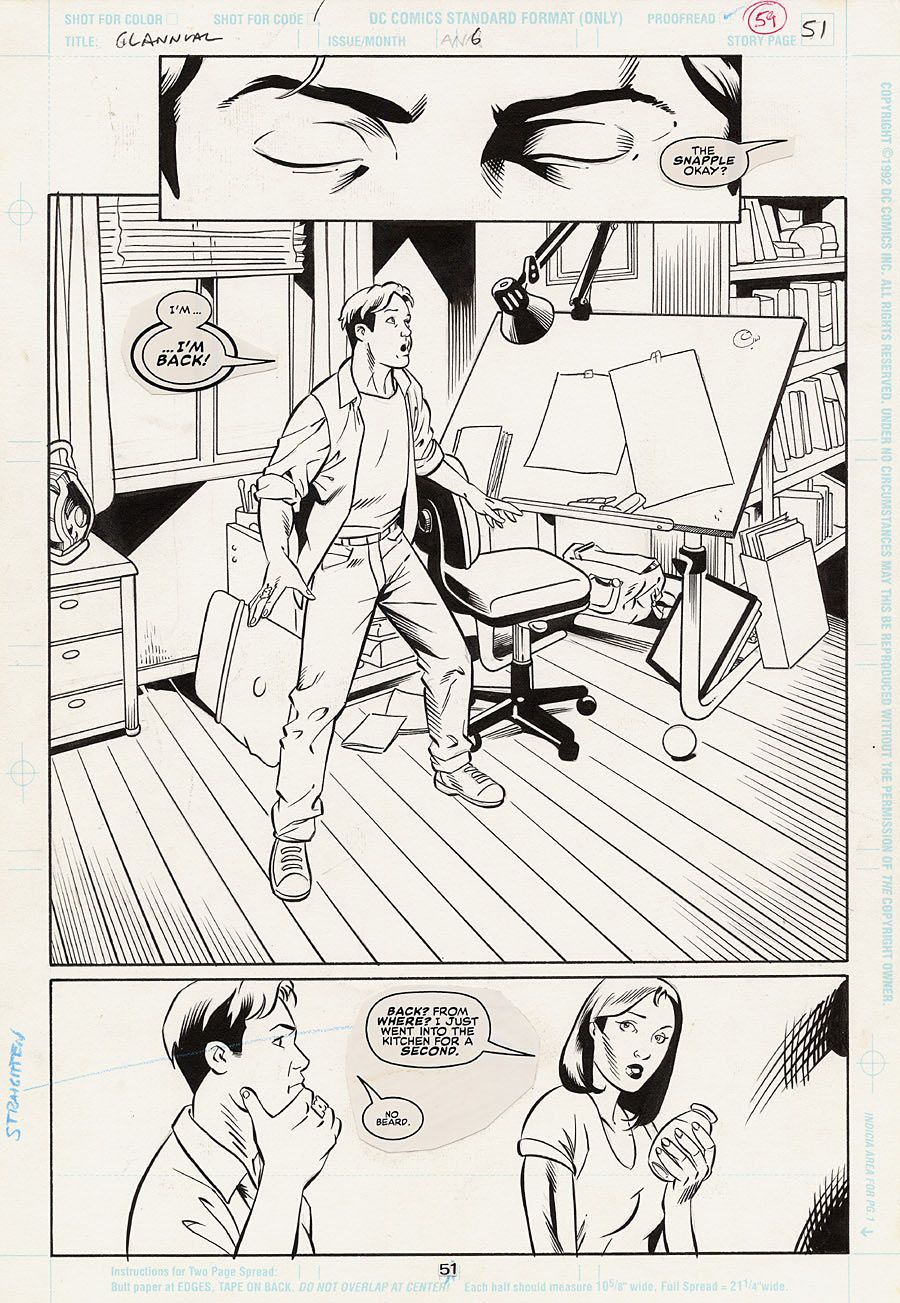Just My Imagination, Running Away With Me
One of the true pleasures of this job is having someone tell you that one of your stories meant something to them, or touched them in some way. Something beyond simple entertainment.
I've had a reader tell me an issue of "Sojourn" helped him deal with the death of a family member. Lesbian readers have told me it was gratifying to see their lives represented in the "Angelus" miniseries. I've been told more than a few times that some of my "Green Lantern" issues served as gateway comics, the start of lifetime comic habits. These aren't meant to be pat-yourself-on-the-back moments. They're much more a reminder that these imaginary stories and characters can have an impact in the real world, on real people.
Not long ago via Twitter, I became aware of a man named Tom Fleming, who is on a quest to collect all the original art from "Green Lantern Annual" #6, an issue I wrote way back in 1997. The issue is one of my favorites from my GL run, a story about Kyle Rayner being pulled into another world through a painting by one of his art teachers. It was part of the "Pulp" stunt that DC ran through all of its Annuals that year, a love letter to the kind of planetary romances I grew up reading, especially the Mars and Venus series by Edgar Rice Burroughs. It was also an exploration of the power of imagination, which I tried to keep as a central theme in my "Green Lantern" run.
The Pulp Annuals were chunky -- 52 pages of story. Jeff Johnson was our "other" artist on "Green Lantern" at the time. Since Darryl Banks wasn't fast enough to pencil the full 12 issues a year (who is?), we had a series of regular artists who picked up some of the monthly issues, as well as extras like Annuals or miniseries. Paul Pelletier was our first regular "pinch hitter," and then Jeff took over the role.
Jeff pencilled all 52 pages of the Annual, but not before generating a stack of designs to bring the world inside the painting to life. Alien races, flora and fauna, underwater cities, maps, entire ecosystems -- Jeff designed more than we could possibly fit into one story. That world was a place we wanted to visit again, but we never got to do so.
I sought out Tom Fleming, who owns a store called Fanfare Sports & Entertainment, and talked to him about why the Annual resonates for him.
Ron Marz: Tell me about yourself, Tom.
Tom Fleming: I'm 51 years old, married, with three daughters. I have a comic book and game store in Kalamazoo, Michigan. We just hit our 30th year in business this past February.
And how did you get interested in comics?
In 1976 my sister was supposed to babysit for some friends. She was sick and my mom asked me to fill in. I wasn't interested, as boys didn't babysit! That was for girls, right? At least that was the prevailing thinking back then. But, she talked me into it and off I went. After the kids were in bed I noticed a copy of "Fantastic Four" #171 on the floor, and I picked it up and read it. I had read comics before, picking up the occasional book here or there, but I wasn't "collecting" at this point. Turns out "Fantastic Four" #171 was part one of a five-part story with the High Evolutionary and Galactus. I got to the end and that was it, no other comics around to continue the story.
The next day I asked the kids if they had the rest of the story, but they didn't. I went to a drug store and saw #180 on the stands. This was when I first realized comics were numbered. I hadn't really paid much attention before this. I asked if they had any earlier issues, but they didn't. They did, however, suggest I check out a used book store down the road. I went there and, sure enough, they had a whole wall of back issues, titles I had never heard of before. That was it, I was hooked.
What about original art? When did you get hooked on that?
I started collecting original art near the end of 1998. I had picked up a couple of pages over the years, a "John Carter of Mars" page and a "Starfire" page that had come into my store, but I wasn't really actively collecting until 1998. Someone came in with a bunch of pages and I bought quite a few. He had a big stack of "Superman" and "Spider-Man" pages but, because there were so many, I just passed on those and selected a nice assortment from the rest of the collection. Oops.
So let's cut to the chase: why this Annual? Why this story?
I am a huge "John Carter of Mars" fan. The Annual cover caught my eye when it first came out. It had that classic pulp feel to it, and incorporated my love of the Mars material with my love of comics. A perfect combination for me. Many times I've seen a nice cover on a comic, only to be disappointed with the interior. In this case, I was pleasantly surprised to find a story that really appealed to me as well, and art that was beautiful and seemed to fit the story just right.
Were you a "Green Lantern" fan before, or was it just this particular story that caught your eye?
I was a "Green Lantern" fan before this story. I'm a big fan of Mike Grell's art, and loved his work on the series reboot back in 1976.
When DC announced the Pulp theme for the Annuals, I immediately wanted to do a planetary romance pastiche. That's the stuff that inspired me as a kid, especially "John Carter of Mars" by Edgar Rice Burroughs. The Mars/Marz thing probably didn't hurt.
I read the Burroughs Mars series more than once. I discovered the series in 1977. I had just moved to a new state and came across the first five books in a slipcase. These had the cover art by Gino D'Achille and the slipcase had art by Boris. After the first five I found the remaining six books and finished them off right around the time that Marvel released their "John Carter of Mars" comic series.
That has to be right around the time I first discovered the novels as well. The first editions that I had were the ones with the D'Achille covers. Probably not too long after that, I saw the John Carter illustrations in the Frazetta art books from Ballantine.
It was a good time to be a Mars fan.
What prompted you to seek out all the art? Fifty-two pages is a pretty tall order to set for yourself.
I was at a convention in Chicago, this was probably around 1999, maybe 2000? I asked a dealer if he knew who did the art for the cover, and he said it was Gary Gianni. Gary's signature is covered up by the barcode and, as I was unfamiliar with his work, I didn't recognize it. I asked the dealer if he thought it was available, and he replied that Gary rarely sells his art, but that he was set up in artist alley. I went to Gary's table and he said he still had it, and we agreed on a price.
I have to say, my experience with Gary was wonderful. He invited me to his place in Chicago and I was able to pick up the painting in person. Even took the time to have lunch with my friend and me. I have continued to collect art over the years, but I have to say that this piece was my favorite piece the day I got it, and has remained my favorite piece ever since. It hangs in my office to this day.
Gary is the best of the best, just amazing stuff, whether he's painting or working in black-and-white. I think I first met Gary on a convention trip to Oregon. We ended up going hot-air ballooning together, thanks to the con promoter arranging an outing. I was thrilled when I found out he was going to be doing the cover for the Annual.
What about the interior pages? You'd need a museum space if you had them all framed. Do you just keep them in a drawer?
The interiors are another story. The pencils are by Jeff Johnson and the inks by John Lowe. I was able to pick up a couple of large groups right away from dealers. I also contacted Jeff Johnson, and I know he had at least one page and probably a few more than that. I also received a gift from a fellow collector when he found one of the nicer pages at a show, and just sent it to me unannounced. I keep the interiors in a portfolio. Where I'm missing a page, I have a page from the comic book holding the spot.
Ron: So how many of the pages do you have now? I don't have any originals from the Annual, or I'd hand them over to you.
I currently have 39 of the 52 pages, but it's been a number of years now since I last found one. I like to hope that perhaps a good number of those remaining 13 pages are in one collection, and perhaps I may find a bunch of them at once.
Is there some deeper meaning here for you, or is this just a story that entertained you?
The Mars books mean a great deal to me. There's a sense of honor and honesty that is prevalent throughout the series. Obviously not so much with the villains, but those on the side of "right" were not swayed by temptations. You could always count on John to do the right thing. I remember reading that if you could not tell the truth, you remained silent. Lying, on Mars, was considered more offensive than killing, in some respects. That clicked for me. I was always a fairly honest individual already, but that philosophy really worked for me, to the point that I feel it contributed to who I was and what I wanted to be.
With the Annual, I like the way the artist was overlooked, and essentially created his own world and was able to go there himself. Also, Kyle seems to "will" himself into the painting, although later we realize the artist was reaching out for someone to help maintain his world. In the Mars series, John Carter reaches out towards Mars and finds himself pulled there. I think an adventure like this appeals to most of us. What if we could, just by looking at a painting or picture, will ourselves to be there? Escape from the "real world," if you will.
Tom's entire gallery of "Green Lantern Annual" #6 art can be seen online at http://www.comicartfans.com/galleryroom.asp?gsub=122431.
Ron Marz has been writing comics for two decades, and thinks it's pretty much the best job ever. His current work includes "Witchblade" and the graphic novel series "Ravine" for Top Cow, "The Protectors" for Athleta Comics and his creator-owned title, "Shinku," for Image. Follow him on Twitter (@ronmarz) and his website, www.ronmarz.com.

